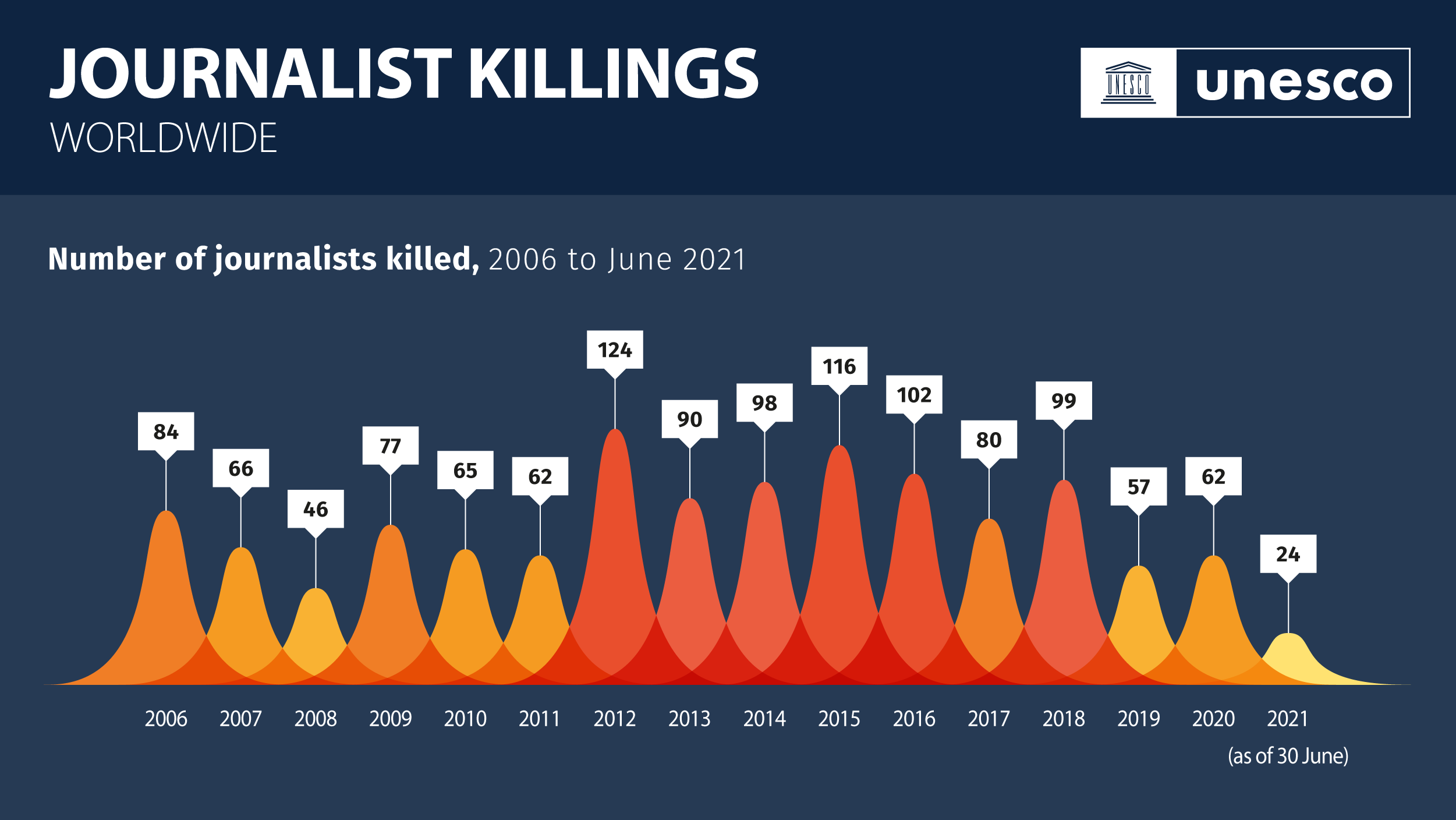
Journalism: A dangerous profession
Attacks, intimidation, and even murder. Journalists across the world face serious risks and threats every day, just for doing their jobs – reporting the news and bringing information to the public.
Linda Klaassen
UNESCO
Over the past decade, a journalist has been killed every four days on average. Each year since 2016, more journalists have been killed outside of conflict zones than in countries currently experiencing armed conflict. A total of eighty-six killings of journalists worldwide have been reported between 2020 and the end of June 2021.
Impunity for crimes against journalists continues to prevail, with nine of ten killings remaining unpunished. The year 2020 saw a slight improvement, however, with thirteen per cent of cases worldwide reported as resolved, compared to twelve per cent in 2019, and eleven per cent in 2018. In many cases, impunity results from bottlenecks within the justice system itself.
While fewer women journalists are among the victims of fatal attacks, women are particularly targeted by offline and online gender-based threats and harassment. These attacks have increased significantly in recent years. Women journalists have identified political leaders, extremist networks and partisan media as some of the biggest instigators and amplifiers of online violence against women, according to the UNESCO discussion paper The Chilling: Global trends in online violence against women journalists, 2021, based on a major interdisciplinary study produced by the International Center for Journalists (ICFJ).
In the context of the Covid-19 pandemic, media workers around the world have also been subject to harassment, persecution and detention as a result of their work to keep citizens informed about the health crisis.
Source: UNESCO and the UNESCO Director-General's Report on the Safety of Journalists and the Danger of Impunity, 2020.
This section is published to mark the International Day to End Impunity for Crimes against Journalists,
2 November.






Read more:
Global toolkit for judicial actors: international legal standards on freedom of expression, access to information and safety of journalists, UNESCO, 2021
Investigative journalism: Against the odds, The UNESCO Courier, July-September 2017
Dawit Isaak: A symbol of press freedom who must be freed, The UNESCO Courier, July-September 2017
Training judges online to safeguard journalists, The UNESCO Courier, April-June 2017
Subscribe to The UNESCO Courier for thought-provoking articles on contemporary issues. The digital version is completely free.



















